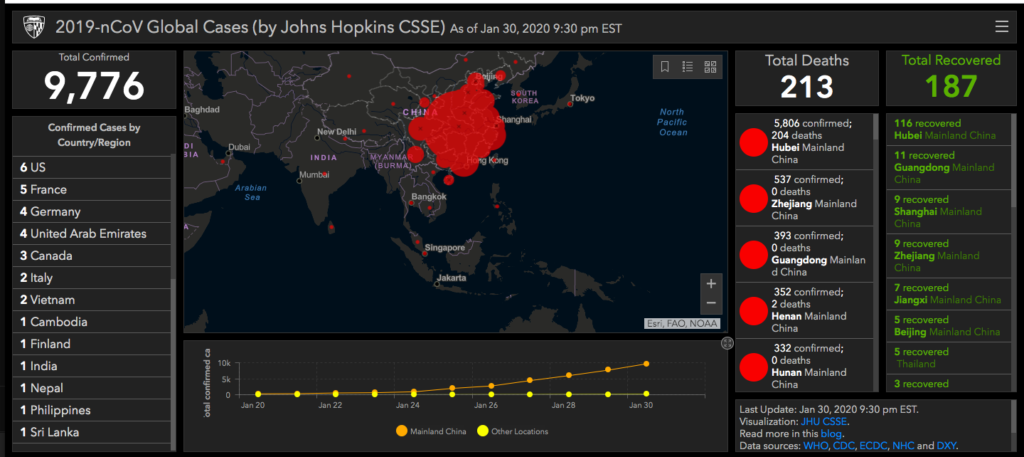
As of 2:40 p.m. of January 31, 2020, there are a total 213 recorded deaths, 9,776 infected individuals, and 187 cases of recovery of the Wuhan coronavirus based on the records of the John Hopkins University 2019-nCov global tracker. | Screengrabbed from John Hopkins CCSE
CEBU CITY, Philippines — As more information is gathered about how the 2019 novel-coronavirus (n-CoV or Wuhan coronavirus) behaves, health experts are also working hard to understand the virus to implement more measures to prevent its spread.
Dr. Jaime Bernadas, Department of Health in Central Visayas (DOH-7) director, said this as more measures had been put in place to prevent the spread of the n-COV in the country amid the first confirmed case of a the virus in the country — a 38-year-old Chinese woman confined in a Manila hospital.
These included the precautionary measures given by the Department of Health on how to prevent getting the virus.
Read more: Wear mask only when sick, immunocompromised – DOH-7
Bernadas again encouraged the public to stay calm and vigilant and to follow these DOH precautionary measures such as constant handwashing, wearing of face masks for sick people, and to take steps to boost one’s immune system as deterrents to getting any communicable disease including the n-CoV.
Bernadas also said that the n-CoV had a lower death rate than the deadly Severe Acute Respiratory Syndrome (SARS), which spread across Asia in 2003, and Middle East respiratory syndrome (MERS), which spread in 2012.
The World Health Organization (WHO) recently reported that the death rate for the Wuhan coronavirus is 2.1 percent, relatively smaller than the 9.6 percent death rate of SARS and 35 percent death rate of MERS.
Read more: WHO declares global emergency over virus from China
Bernadas said that what contributed to the public fear was the novelty of the Wuhan coronavirus as when it first came out, scientists had no record on its behavior, virulence, transferability, pathogenicity and resistance.
However, as studies continue to this day along with its spread to over 38 countries, more and more information is gathered about the Wuhan Coronavirus.
“This is self-limiting, it goes away after five to seven days. It’s just another virus that the body copes up with. The only difference is we just don’t really have the full spectrum of how the virus behaves,” said Bernadas.
Bernadas also said that the viruses had the capability to change its configuration after it would infect one human to another human and mutate to a more serious disease or would weaken to a less severe illness.
Read more: BREAKING: 56 patients now under investigation for suspected nCoV — DOH
The information is fluid and changing and the DOH is actively monitoring these changes and figures.
As of 2:40 p.m. of January 31, 2020, there are a total 213 recorded deaths, 9,776 infected individuals, and 187 cases of recovery of the Wuhan coronavirus based on the records of the John Hopkins University 2019-nCov global tracker.
In the Philippines, there are still 56 suspected cases of the virus being monitored by the DOH./dbs